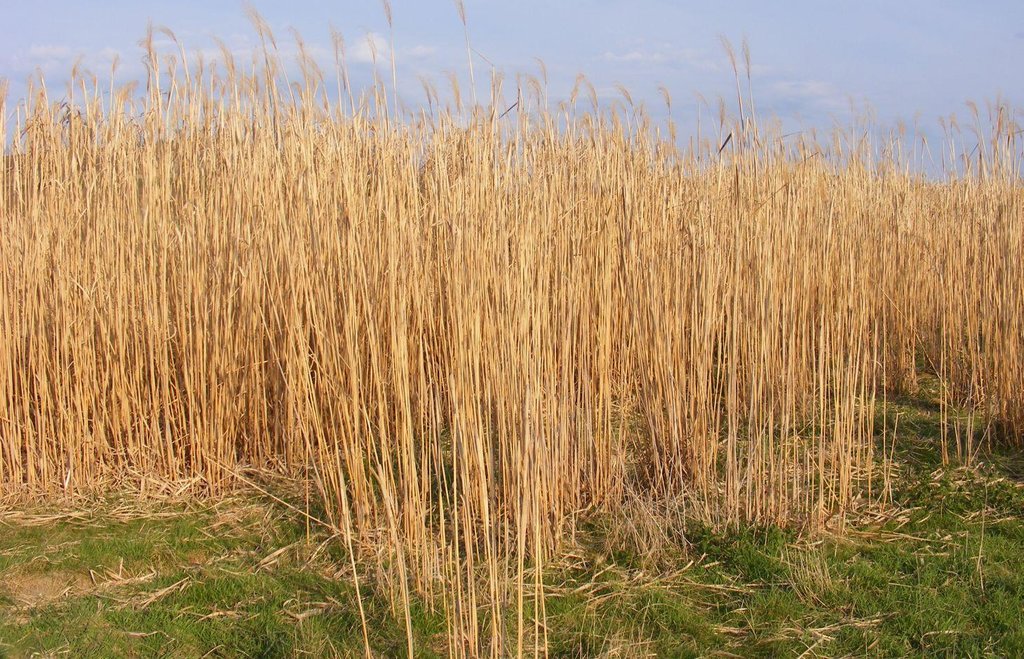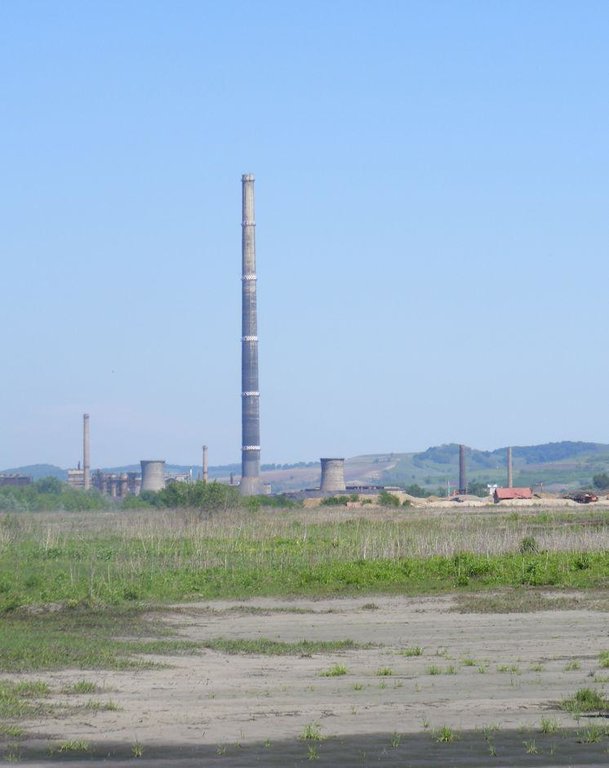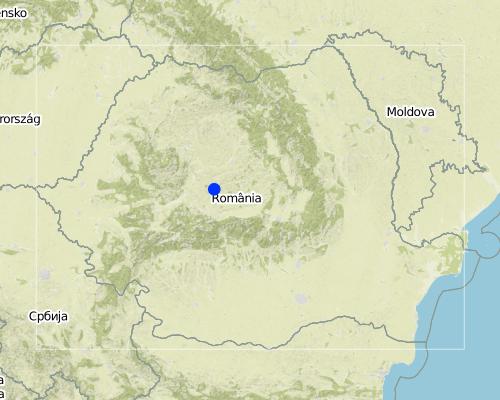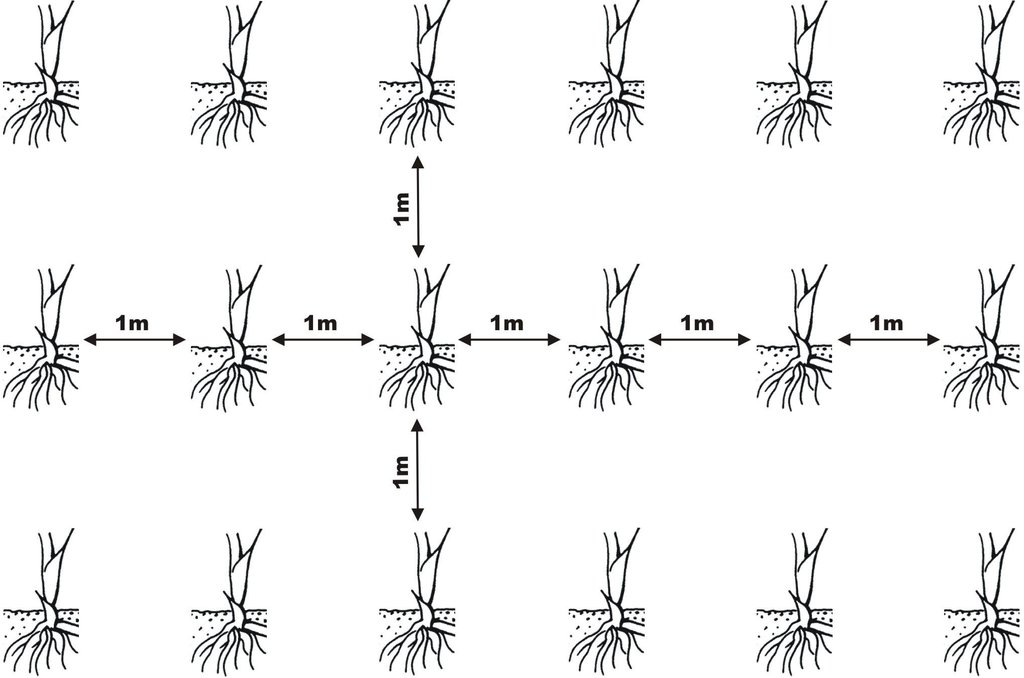Cropping perennial grasses (Miscanthus sinensis gigantheus) on soils contaminated with heavy metals [โรมาเนีย]
- ผู้สร้างสรรค์:
- การอัพเดท:
- ผู้รวบรวม: Andrei Vrinceanu
- ผู้เรียบเรียง: –
- ผู้ตรวจสอบ: Deborah Niggli
Cultivarea cu Miscanthus a solurilor poluate cu metale grele (Romanian)
technologies_1706 - โรมาเนีย
ดูส่วนย่อย
ขยายทั้งหมด ย่อทั้งหมด1. ข้อมูลทั่วไป
1.2 รายละเอียดที่ติดต่อได้ของผู้รวบรวมและองค์กรที่เกี่ยวข้องในการประเมินและการจัดเตรียมทำเอกสารของเทคโนโลยี
ผู้เชี่ยวชาญ SLM:
ผู้เชี่ยวชาญ SLM:
Horia Barbu
Lucian Blaga University of Sibiu
โรมาเนีย
ชื่อขององค์กรซึ่งอำนวยความสะดวกในการทำเอกสารหรือการประเมินเทคโนโลยี (ถ้าเกี่ยวข้อง)
National Research and Development Institute for So (National Research and Development Institute for So) - โรมาเนีย1.3 เงื่อนไขการใช้ข้อมูลที่ได้บันทึกผ่านทาง WOCAT
วันที่เก็บรวบรวมข้อมูล(ภาคสนาม) :
18/05/2015
ผู้รวบรวมและวิทยากรหลักยอมรับเงื่อนไขเกี่ยวกับการใช้ข้อมูลที่ถูกบันทึกผ่านทาง WOCAT:
ใช่
1.4 การเปิดเผยเรื่องความยั่งยืนของเทคโนโลยีที่ได้อธิบายไว้
เทคโนโลยีที่ได้อธิบายไว้นี้เป็นปัญหาของความเสื่อมโทรมโทรมของที่ดินหรือไม่ จึงไม่ได้รับการยอมรับว่าเป็นเทคโนโลยีเพื่อการจัดการที่ดินอย่างยั่งยืน:
ไม่ใช่
2. การอธิบายลักษณะของเทคโนโลยี SLM
2.1 การอธิบายแบบสั้น ๆ ของเทคโนโลยี
คำจำกัดความของเทคโนโลยี:
Miscanthus sinensis gigantheus is a perennial warm-season grass used as a commercial energy crop on soils contaminated with heavy metals.
2.2 การอธิบายแบบละเอียดของเทคโนโลยี
คำอธิบาย:
Cropping Miscanthus sinensis gigantheus mainly addresses the problem of land contamination with toxic materials namely soil pollution with heavy metals due to industrial activities. Miscanthus is a perennial warm-season grass used as a commercial energy crop. The plant is a sterile hybrid, unable to produce viable seed, vegetative propagation being by rhizomes, therefore reducing the risk to become invasive. Its special type of photosynthesis (C4) implies the return of the nutrients in the rhizomes during the cold season. As temperatures cool in the fall, the dark green foliage fades to buff and drops, leaving the stems which are the most important commercial part of Miscanthus. Regarding cropping on contaminated soils, research has shown that the amount of heavy metals uptaken by Miscanthus is extremely low, making the plant unsuitable for phytoextraction but allowing it to be used for green energy or in various other fields like pulp and paper industry, without any risk. Miscanthus sinensis gigantheus stands for an alternative crop, from which an annual income can be obtained, instead of food crops and fodder that can represent a risk for human and animal consumption in areas with soils contaminated with heavy metals.
The aim of this technology is to assure a sustainable use of polluted soils with heavy metals through cultivation of energy crops with economic value and very few risks for humans, animals and environment. Studies of Miscanthus sinensis gigantheus behaviour on contaminated soils with heavy metals showed that very small amount of Pb (Lead) and Cd (Cadmium) were detected in the upper parts of the plants. In comparison, higher amounts of heavy metals is being retained at root level in rhizomes, which in time will decrease when root system will develop deeper, in less affected soil horizons as roots can reach 2-3 m in depth. The applied technology increases overall soil quality in terms of organic matter, nutrients and structure. Miscanthus cropping enhances the nutrients cycle in the plant–soil system. As a result of the high input of leaves, rhizomes and roots, the alluvial sandy loam soils, on which Miscanthus is currently croped, can benefit of increased organic carbon amount.
The establishment phase takes place on arable land (annual cropland) which after implementation will become a permanent cropland with perennial (non-woody) cropping, as the crop has the potential to be in the ground for at least 15 years. Miscanthus cropping technique consists of the following: weeding the site in July-August by spraying herbicides for controlling perennial weeds, deep ploughing in October-November to improve subsoil structure and soil aeration possible affected by compaction or hardpan, harrowing in February-April to ensure an adequate seedbed for rhizomes and planting in March-May. Early planting is being recommended as it takes advantage of spring time soil moisture and allows an extended first season of growth. The operation can be made using a modular potato planter or specialized planter like Miscanthus ETPM4. The planting rate is 10 000 rhizomes per hectare in order to provide a good crop density required to achieve optimal yields from year three onwards and effective weed suppression through competition. Rhizomes need to be planted at a depth of 8-15 cm and at 1m x 1m wide spacing. The crop is harvested annually during February-March, typically with conventional farm machineries or specialized ones like Miscanthus CRM Harvesting Cropper. The crop needs 3 to 4 years to reach a mature yield between 15-18 t/ha. The technology requires mechanized agricultural operations and investments in specialized equipment, if necessary.
The technology is applied mainly on alluvial sandy loam soils (Fluvisols), with deep depths, on low lands with flat-gentle slops (0-5%), placed in valley floors/floodplains. The climate is temperate, semi-arid, with an average annual rainfall between 550-600 mm. The plots cropped with Miscanthus are privately owned but leased. Size of crop land where the technology is applied is usually small up to 2 ha. The farmers receive agricultural subsidies and the production system is mechanized and market oriented.
2.3 รูปภาพของเทคโนโลยี
2.5 ประเทศภูมิภาค หรือสถานที่ตั้งที่เทคโนโลยีได้นำไปใช้และได้รับการครอบคลุมโดยการประเมินนี้
ประเทศ:
โรมาเนีย
ภูมิภาค/รัฐ/จังหวัด:
Romania/Transylvania
ข้อมูลจำเพาะเพิ่มเติมของสถานที่ตั้ง :
Sibiu/Axente Sever
Map
×2.6 วันที่การดำเนินการ
ถ้าไม่รู้ปีที่แน่นอน ให้ระบุวันที่โดยประมาณ:
- น้อยกว่า 10 ปี (ไม่นานนี้)
2.7 คำแนะนำของเทคโนโลยี
ให้ระบุว่าเทคโนโลยีถูกแนะนำเข้ามาอย่างไร:
- ทางโครงการหรือจากภายนอก
ความคิดเห็น (ประเภทของโครงการ เป็นต้น) :
from 2008
3. การจัดประเภทของเทคโนโลยี SLM
3.2 ประเภทของการใช้ที่ดินในปัจจุบันที่ได้นำเทคโนโลยีไปใช้

พื้นที่ปลูกพืช
- การปลูกพืชยืนต้นที่ไม่มีเนื้อไม้
แสดงความคิดเห็น:
Major land use problems (compiler’s opinion): Soil contamination with heavy metals (Pb, Cd, Zn).
Major land use problems (land users’ perception): Soil contamination with heavy metals (Pb, Cd, Zn).
ถ้าการใช้ที่ดินมีการเปลี่ยนแปลงเนื่องมาจากการนำเทคโนโลยีไปปฏิบัติใช้ ให้ระบุการใช้ที่ดินก่อนนำเทคโนโลยีไปปฏิบัติใช้:
Cropland: Ca: Annual cropping
3.3 ข้อมูลเพิ่มเติมเกี่ยวกับการใช้ที่ดิน
การใช้น้ำของที่ดินที่มีการใช้เทคโนโลยีอยู่:
- จากน้ำฝน
จำนวนของฤดูเพาะปลูกต่อปี:
- 1
ระบุ:
Longest growing period in days: 240Longest growing period from month to month: April until October
3.4 กลุ่ม SLM ที่ตรงกับเทคโนโลยีนี้
- การปรับปรุงดิน / พืชคลุมดิน
- การจัดการความอุดมสมบรูณ์ของดินแบบผสมผสาน
3.5 กระจายตัวของเทคโนโลยี
ระบุการกระจายตัวของเทคโนโลยี:
- กระจายไปอย่างสม่ำเสมอในพื้นที่
ถ้าหากว่าเทคโนโลยีได้มีการกระจายออกไปอย่างสม่ำเสมอในพื้นที่ ให้ระบุปริมาณพื้นที่ที่ได้รับการครอบคลุมถึง:
- 0.1-1 ตร.กม.
แสดงความคิดเห็น:
Total area covered by the SLM Technology is 0.14 m2.
3.6 มาตรการ SLM ที่ประกอบกันเป็นเทคโนโลยี

มาตรการอนุรักษ์ด้วยวิธีพืช
- V2: หญ้าและไม้ยืนต้น

มาตรการอนุรักษ์ด้วยการจัดการ
- M2: การเปลี่ยนแปลงของการจัดการหรือระดับความเข้มข้น
- M4: การเปลี่ยนแปลงช่วงเวลาให้เหมาะแก่การทำกิจกรรม
แสดงความคิดเห็น:
Main measures: vegetative measures
Secondary measures: management measures
Type of vegetative measures: aligned: -linear
3.7 รูปแบบหลักของการเสื่อมโทรมของที่ดินที่ได้รับการแก้ไขโดยเทคโนโลยี

การกัดกร่อนของดินโดยน้ำ
- Wt (Loss of topsoil): การสูญเสียดินชั้นบนหรือการกัดกร่อนที่ผิวดิน

การกัดกร่อนของดินโดยลม
- Ed (Deflation and deposition): การกัดกร่อนโดยลมและการทับถม

การเสื่อมโทรมของดินทางด้านเคมี
- Cp (Soil pollution): มลพิษในดิน
แสดงความคิดเห็น:
Main causes of degradation: release of airborne pollutants (urban/industry…) (Heavy metals contamination (Pb, Cd, Zn))
Secondary causes of degradation: governance / institutional (Non-ferrous industry was a strategic activity in communist period with high mass production on the expense of environmental investments (e.g. filters).)
3.8 การป้องกัน การลดลง หรือการฟื้นฟูความเสื่อมโทรมของที่ดิน
ระบุเป้าหมายของเทคโนโลยีกับความเสื่อมโทรมของที่ดิน:
- ลดความเสื่อมโทรมของดิน
4. ข้อมูลจำเพาะด้านเทคนิค กิจกรรมการนำไปปฏิบัติใช้ ปัจจัยนำเข้า และค่าใช้จ่าย
4.1 แบบแปลนทางเทคนิคของเทคโนโลยี
4.2 ข้อมูลจำเพาะด้านเทคนิคและการอธิบายแบบแปลนทางเทคนิค
Schematic diagram indicating the spatial distribution of Mischantus rhizomes (1 m between plants) - part of the planting technology
Technical knowledge required for land users: moderate
Main technical functions: increase of biomass (quantity), retain heavy metals at roots level
Secondary technical functions: improvement of ground cover, improvement of surface structure (crusting, sealing), improvement of topsoil structure (compaction), improvement of subsoil structure (hardpan), increase in organic matter, reduction in wind speed
Aligned: -linear
Vegetative material: C : perennial crops
Number of plants per (ha): 10000
Vertical interval between rows / strips / blocks (m): 1
Spacing between rows / strips / blocks (m): 1
Vertical interval within rows / strips / blocks (m): 1
Width within rows / strips / blocks (m): 1
Perennial crops species: Miscanthus sinensis gigantheus
Change of land use practices / intensity level: from rotational cropping to mono-cropping
Major change in timing of activities: from land preparation and planting in the first year to only harvesting from year 3 to 15
4.3 ข้อมูลทั่วไปเกี่ยวกับการคำนวณปัจจัยนำเข้าและค่าใช้จ่าย
อื่นๆ หรือสกุลเงินประจำชาติ (ระบุ):
Lei
ระบุอัตราแลกเปลี่ยนจากดอลลาร์สหรัฐเป็นสกุลเงินท้องถิ่น (ถ้าเกี่ยวข้อง) คือ 1 เหรียญสหรัฐ =:
4.0
ระบุค่าเฉลี่ยของค่าจ้างในการจ้างแรงงานต่อวัน:
12.00
4.4 กิจกรรมเพื่อการจัดตั้ง
| กิจกรรม | ประเภทของมาตรการ | ช่วงเวลาดำเนินการ | |
|---|---|---|---|
| 1. | Treatment with herbicides | ด้วยวิธีพืช | month VII -VIII |
| 2. | Deep ploughing | ด้วยวิธีพืช | month X-XI |
| 3. | Soil preparation by harrowing | ด้วยวิธีพืช | month II-IV |
| 4. | Planting | ด้วยวิธีพืช | month III-V |
4.5 ค่าใช้จ่ายของปัจจัยนำเข้าที่จำเป็นสำหรับการจัดตั้ง
| ปัจจัยนำเข้า | หน่วย | ปริมาณ | ค่าใช้จ่ายต่อหน่วย | ค่าใช้จ่ายทั้งหมดต่อปัจจัยนำเข้า | %ของค่าใช้จ่ายที่ก่อให้เกิดขึ้นโดยผู้ใช้ที่ดิน | |
|---|---|---|---|---|---|---|
| แรงงาน | ha | 1.0 | 102.0 | 102.0 | 93.0 | |
| อุปกรณ์ | machine use | ha | 1.0 | 237.0 | 237.0 | 93.0 |
| วัสดุด้านพืช | seeds | ha | 1.0 | 2180.0 | 2180.0 | 93.0 |
| วัสดุด้านพืช | biocides | ha | 1.0 | 62.0 | 62.0 | 93.0 |
| ค่าใช้จ่ายทั้งหมดของการจัดตั้งเทคโนโลยี | 2581.0 | |||||
แสดงความคิดเห็น:
Duration of establishment phase: 9 month(s)
4.6 การบำรุงรักษาสภาพหรือกิจกรรมที่เกิดขึ้นเป็นประจำ
| กิจกรรม | ประเภทของมาตรการ | ช่วงระยะเวลา/ความถี่ | |
|---|---|---|---|
| 1. | Harvest | ด้วยวิธีพืช | month II-III |
| 2. | Harvest | ด้วยการจัดการ | month II-III |
4.7 ค่าใช้จ่ายของปัจจัยนำเข้าและกิจกรรมที่เกิดขึ้นเป็นประจำที่ต้องการการบำรุงรักษา (ต่อปี)
| ปัจจัยนำเข้า | หน่วย | ปริมาณ | ค่าใช้จ่ายต่อหน่วย | ค่าใช้จ่ายทั้งหมดต่อปัจจัยนำเข้า | %ของค่าใช้จ่ายที่ก่อให้เกิดขึ้นโดยผู้ใช้ที่ดิน | |
|---|---|---|---|---|---|---|
| แรงงาน | ha | 1.0 | 25.0 | 25.0 | ||
| อุปกรณ์ | machine use | ha | 1.0 | 124.0 | 124.0 | |
| ค่าใช้จ่ายทั้งหมดของการบำรุงรักษาสภาพเทคโนโลยี | 149.0 | |||||
แสดงความคิดเห็น:
Machinery/ tools: MISCANTHUS ETPM4 Planter; MISCANTHUS CRM HARVESTING Cropper; Deep Reversible Plough; Disc Harrows; Sprayers machime; Tractor, MISCANTHUS ETPM4 Planter; MISCANTHUS CRM HARVESTING Cropper; Deep Reversible Plough; Disc Harrows; Sprayers machime; Tractor
The costs are indicated per ha of land where the technology is implemented. The establishment costs are high but after this in the next 15 years the crop requires only harvesting. As part of the National Rural Development Programme, energy crops receive a subsidy of 173 US $ per ha. Prices are for spring 2015.
4.8 ปัจจัยสำคัญที่สุดที่มีผลกระทบต่อค่าใช้จ่าย
ปัจจัยสำคัญที่สุดที่มีผลกระทบต่อค่าใช้จ่ายต่างๆ:
The price of rhizomes (seeds) per hectare and harvesting activity involving special machines that cut and chop stems are the most determinate factors affecting the costs.
5. สิ่งแวดล้อมทางธรรมชาติและของมนุษย์
5.1 ภูมิอากาศ
ฝนประจำปี
- < 250 ม.ม.
- 251-500 ม.ม.
- 501-750 ม.ม.
- 751-1,000 ม.ม.
- 1,001-1,500 ม.ม.
- 1,501-2,000 ม.ม.
- 2,001-3,000 ม.ม.
- 3,001-4,000 ม.ม.
- > 4,000 ม.ม.
ข้อมูลจำเพาะ/ความคิดเห็นเรื่องปริมาณน้ำฝน:
573 mm/year; May and June register the highest amount of rainfall during the year: 85-100 mm
เขตภูมิอากาศเกษตร
- กึ่งแห้งแล้ง
Thermal climate class: temperate
5.2 สภาพภูมิประเทศ
ค่าเฉลี่ยความลาดชัน:
- ราบเรียบ (0-2%)
- ลาดที่ไม่ชัน (3-5%)
- ปานกลาง (6-10%)
- เป็นลูกคลื่น (11-15%)
- เป็นเนิน (16-30%)
- ชัน (31-60%)
- ชันมาก (>60%)
ธรณีสัณฐาน:
- ที่ราบสูง/ที่ราบ
- สันเขา
- ไหล่เขา
- ไหล่เนินเขา
- ตีนเนิน
- หุบเขา
ระดับความสูง:
- 0-100 เมตร
- 101-500 เมตร
- 501-1,000 เมตร
- 1,001-1,500 เมตร
- 1,501-2,000 เมตร
- 2,001-2,500 เมตร
- 2,501-3,000 เมตร
- 3,001-4,000 เมตร
- > 4,000 เมตร
5.3 ดิน
ค่าเฉลี่ยความลึกของดิน:
- ตื้นมาก (0-20 ซ.ม.)
- ตื้น (21-50 ซ.ม.)
- ลึกปานกลาง (51-80 ซ.ม.)
- ลึก (81-120 ซ.ม.)
- ลึกมาก (>120 ซ.ม.)
เนื้อดิน (ดินชั้นบน):
- หยาบ/เบา (ดินทราย)
- ปานกลาง (ดินร่วน ทรายแป้ง)
อินทรียวัตถุในดิน:
- ปานกลาง (1-3%)
5.4 ความเป็นประโยชน์และคุณภาพของน้ำ
ระดับน้ำใต้ดิน:
<5 เมตร
น้ำไหลบ่าที่ผิวดิน:
ดี
คุณภาพน้ำ (ที่ยังไม่ได้บำบัด):
เป็นน้ำเพื่อการดื่มที่ไม่ดี (จำเป็นต้องได้รับการบำบัด)
5.5 ความหลากหลายทางชีวภาพ
ความหลากหลายทางชนิดพันธุ์:
- ปานกลาง
5.6 ลักษณะของผู้ใช้ที่ดินที่นำเทคโนโลยีไปปฏิบัติใช้
แนวทางการตลาดของระบบการผลิต:
- ทำการค้า/การตลาด
รายได้ที่มาจากนอกฟาร์ม:
- 10-50% ของรายได้ทั้งหมด
ระดับของความมั่งคั่งโดยเปรียบเทียบ:
- พอมีพอกิน
เป็นรายบุคคล/ครัวเรือน:
- เป็นรายบุคคล/ครัวเรือน
ระดับของการใช้เครื่องจักรกล:
- งานที่ใช้แรงกาย
- การใช้เครื่องจักรหรือเครื่องยนต์
เพศ:
- ชาย
ระบุลักษณะอื่นๆที่เกี่ยวข้องของผู้ใช้ที่ดิน:
Land users applying the Technology are mainly common / average land users
Population density: 10-50 persons/km2
Annual population growth: 0.5% - 1%
100% of the land users are average wealthy and own 75% of the land.
and own 25% of the land.
5.7 พื้นที่เฉลี่ยของที่ดินที่เป็นเจ้าของหรือเช่าโดยผู้ใช้ที่ดินที่นำเทคโนโลยีไปปฏิบัติใช้
- < 0.5 เฮกตาร์
- 0.5-1 เฮกตาร์
- 1-2 เฮกตาร์
- 2-5 เฮกตาร์
- 5-15 เฮกตาร์
- 15-50 เฮกตาร์
- 50-100 เฮกตาร์
- 100-500 เฮกตาร์
- 500-1,000 เฮกตาร์
- 1,000-10,000 เฮกตาร์
- >10,000 เฮกตาร์
พิจารณาว่าเป็นขนาดเล็ก กลาง หรือขนาดใหญ่ (ซึ่งอ้างอิงถึงบริบทระดับท้องถิ่น):
- ขนาดเล็ก
5.8 กรรมสิทธิ์ในที่ดิน สิทธิในการใช้ที่ดินและสิทธิในการใช้น้ำ
กรรมสิทธิ์ในที่ดิน:
- รายบุคคล ไม่ได้รับสิทธิครอบครอง
สิทธิในการใช้ที่ดิน:
- เช่า
5.9 การเข้าถึงบริการและโครงสร้างพื้นฐาน
สุขภาพ:
- จน
- ปานกลาง
- ดี
การศึกษา:
- จน
- ปานกลาง
- ดี
ความช่วยเหลือทางด้านเทคนิค:
- จน
- ปานกลาง
- ดี
การจ้างงาน (เช่น ภายนอกฟาร์ม):
- จน
- ปานกลาง
- ดี
ตลาด:
- จน
- ปานกลาง
- ดี
พลังงาน:
- จน
- ปานกลาง
- ดี
ถนนและการขนส่ง:
- จน
- ปานกลาง
- ดี
น้ำดื่มและการสุขาภิบาล:
- จน
- ปานกลาง
- ดี
บริการด้านการเงิน:
- จน
- ปานกลาง
- ดี
6. ผลกระทบและสรุปคำบอกกล่าว
6.1 ผลกระทบในพื้นที่ดำเนินการ (On-site) จากการใช้เทคโนโลยี
ผลกระทบทางด้านเศรษฐกิจและสังคม
การผลิต
การจัดการที่ดิน
การผลิตพลังงาน
แสดงความคิดเห็น/ระบุ:
Miscanthus is an energy crop cultivated for generation of heat and biofuels
รายได้และค่าใช้จ่าย
ค่าใช่จ่ายของปัจจัยการผลิตทางการเกษตร
แสดงความคิดเห็น/ระบุ:
Usually from year two no agricultural inputs (fertilizers and pesticides) are required. In case of establishment losses, additional planting is needed to achieve the plant density for optimal yields.
รายได้จากฟาร์ม
ความหลากหลายของแหล่งผลิตรายได้
ผลกระทบทางด้านเศรษฐกิจและสังคมอื่น ๆ
farm energy independence
ผลกระทบด้านสังคมวัฒนธรรมอื่น ๆ
ความมั่นคงด้านอาหาร / พึ่งตนเองได้
การบรรเทาความขัดแย้ง
ผลกระทบด้านนิเวศวิทยา
วัฐจักรน้ำหรือน้ำบ่า
น้ำไหลบ่าที่ผิวดิน
การระเหย
ดิน
ความชื้นในดิน
สิ่งปกคลุมดิน
การเกิดแผ่นแข็งที่ผิวดิน /การเกิดชั้นดาน
การอัดแน่นของดิน
การหมุนเวียนและการเติมของธาตุอาหาร
อินทรียวัตถุในดิน/ต่ำกว่าดินชั้น C
ความหลากหลายทางชีวภาพของพืชและสัตว์
มวลชีวภาพ/เหนือดินชั้น C
ความหลากหลายทางชีวภาพของสัตว์
ความหลากหลายของสัตว์
ลดความเสี่ยงของภัยพิบัติ
การปล่อยคาร์บอนและก๊าซเรือนกระจก
ความเสี่ยงจากไฟ
ความเร็วของลม
6.2 ผลกระทบนอกพื้นที่ดำเนินการ (Off-site) จากการใช้เทคโนโลยี
ตะกอนที่ถูกพัดพามาโดยลม
6.3 การเผชิญและความตอบสนองของเทคโนโลยีต่อการเปลี่ยนแปลงสภาพภูมิอากาศที่ค่อยเป็นค่อยไป และสภาพรุนแรงของภูมิอากาศ / ภัยพิบัติ (ที่รับรู้ได้โดยผู้ใช้ที่ดิน)
การเปลี่ยนแปลงสภาพภูมิอากาศที่ค่อยเป็นค่อยไป
การเปลี่ยนแปลงสภาพภูมิอากาศที่ค่อยเป็นค่อยไป
| ฤดู | ประเภทของการเปลี่ยนแปลงสภาพภูมิอากาศที่ค่อยเป็นค่อยไป และสภาพรุนแรงของภูมิอากาศ | เทคโนโลยีมีวิธีการรับมืออย่างไร | |
|---|---|---|---|
| อุณหภูมิประจำปี | เพิ่มขึ้น | ดี |
สภาพรุนแรงของภูมิอากาศ (ภัยพิบัติ)
ภัยพิบัติทางอุตุนิยมวิทยา
| เทคโนโลยีมีวิธีการรับมืออย่างไร | |
|---|---|
| พายุฝนประจำท้องถิ่น | ดี |
| พายุลมประจำท้องถิ่น | ดี |
ภัยพิบัติจากสภาพภูมิอากาศ
| เทคโนโลยีมีวิธีการรับมืออย่างไร | |
|---|---|
| ภัยจากฝนแล้ง | ไม่ค่อยดี |
ภัยพิบัติจากน้ำ
| เทคโนโลยีมีวิธีการรับมืออย่างไร | |
|---|---|
| น้ำท่วมตามปกติ (แม่น้ำ) | ดี |
ผลลัพธ์ตามมาที่เกี่ยวข้องกับภูมิอากาศอื่น ๆ
ผลลัพธ์ตามมาที่เกี่ยวข้องกับภูมิอากาศอื่น ๆ
| เทคโนโลยีมีวิธีการรับมืออย่างไร | |
|---|---|
| ช่วงการปลูกพืชที่ลดลงมา | ไม่ทราบ |
6.4 การวิเคราะห์ค่าใช้จ่ายและผลประโยชน์ที่ได้รับ
ผลประโยชน์ที่ได้รับเปรียบเทียบกับค่าใช้จ่ายในการจัดตั้งเป็นอย่างไร (จากมุมมองของผู้ใช้ที่ดิน)
ผลตอบแทนระยะสั้น:
ด้านลบ
ผลตอบแทนระยะยาว:
ด้านบวก
ผลประโยชน์ที่ได้รับเปรียบเทียบกับค่าใช้จ่ายในการบำรุงรักษาหรือต้นทุนที่เกิดขึ้นซ้ำอีก เป็นอย่างไร (จากมุมมองของผู้ใช้ที่ดิน)
ผลตอบแทนระยะสั้น:
เป็นกลางหรือสมดุล
ผลตอบแทนระยะยาว:
ด้านบวกอย่างมาก
6.5 การปรับตัวของเทคโนโลยี
- มากกว่า 50%
ถ้ามีข้อมูลให้บอกปริมาณด้วย (จำนวนของครัวเรือนหรือครอบคลุมพื้นที่):
1 land user family
แสดงความคิดเห็น:
The farmers receive subsidies provided for energy crops.
There is no trend towards (growing) spontaneous adoption of the technology. The establishment costs are considered high.
6.7 จุดแข็ง / ข้อได้เปรียบ / โอกาสของเทคโนโลยี
| จุดแข็ง / ข้อได้เปรียบ / โอกาสในทัศนคติของผู้ใช้ที่ดิน |
|---|
|
High economic value of the crop |
|
Simple agricultural technique |
|
Low-cost of maintenance / recurrent activities |
| จุดแข็ง / ข้อได้เปรียบ / โอกาสในทัศนคติของผู้รวบรวมหรือวิทยากรหลัก |
|---|
|
This technology allows a sustainable land use of contaminated soils with heavy metals with minimum risk for humans, animals and environment |
|
It is very effective for biomass production with multiple uses: biofuel, animal bedding or cellulose production |
|
Miscanthus sinensis gigantheus is a phytoexcluder with low heavy metal uptake from contaminated soils |
6.8 จุดอ่อน / ข้อเสียเปรียบ / ความเสี่ยงของเทคโนโลยีและวิธีการแก้ไข
| จุดอ่อน / ข้อเสียเปรียบ / ความเสี่ยงในทัศนคติของผู้ใช้ที่ดิน | มีวิธีการแก้ไขได้อย่างไร |
|---|---|
| High costs for initial establishment. The cost of rhizomes (seeds) represents 85% of total initial investment costs | Initial costs could be reduced if a proportion of the crop is used as a “mother crop” for the production of rhizome cuttings |
| High costs for purchasing special machines for harvesting activity | Subsidizing |
| Undeveloped energy crop market | Support for creating local or regional markets for energy crops |
| จุดอ่อน / ข้อเสียเปรียบ / ความเสี่ยงในทัศนคติของผู้รวบรวมหรือวิทยากรหลัก | มีวิธีการแก้ไขได้อย่างไร |
|---|---|
| Low suitability on lands without phreatic input | Selecting sites with good groundwater availability |
| Relatively long period (three to four years) for achieving a mature yield | Maintaining the energy crop subsidies |
7. การอ้างอิงและการเชื่อมต่อ
7.1 วิธีการและแหล่งข้อมูล
- การสัมภาษณ์กับผู้ใช้ที่ดิน
7.2 การอ้างอิงถึงสิ่งตีพิมพ์
หัวข้อ, ผู้เขียน, ปี, หมายเลข ISBN:
Barbu, C.H., Pavel, P.B., Sand, C.; Pop, M.R., 2013. Reduced uptake of Cd and Pb by Miscanthus sinensis x giganteus cultivated on polluted soil and its use as biofuel, Environmental Engineering & Management Journal (EEMJ), Vol. 12 Issue 2, pp: 233-236
หัวข้อ, ผู้เขียน, ปี, หมายเลข ISBN:
Barbu, C.H., Pavel, P.B., Sand, C.; Pop, M.R., 2009. Miscanthus sinensis gigantheus’ behavior on soils polluted with heavy metals, Metal Elements in Environment, Medicine and Biology, Tome IX, Cluj University Press, pp: 21-24
ลิงก์และโมดูล
ขยายทั้งหมด ย่อทั้งหมดลิงก์
ไม่มีลิงก์
โมดูล
ไม่มีโมดูล






